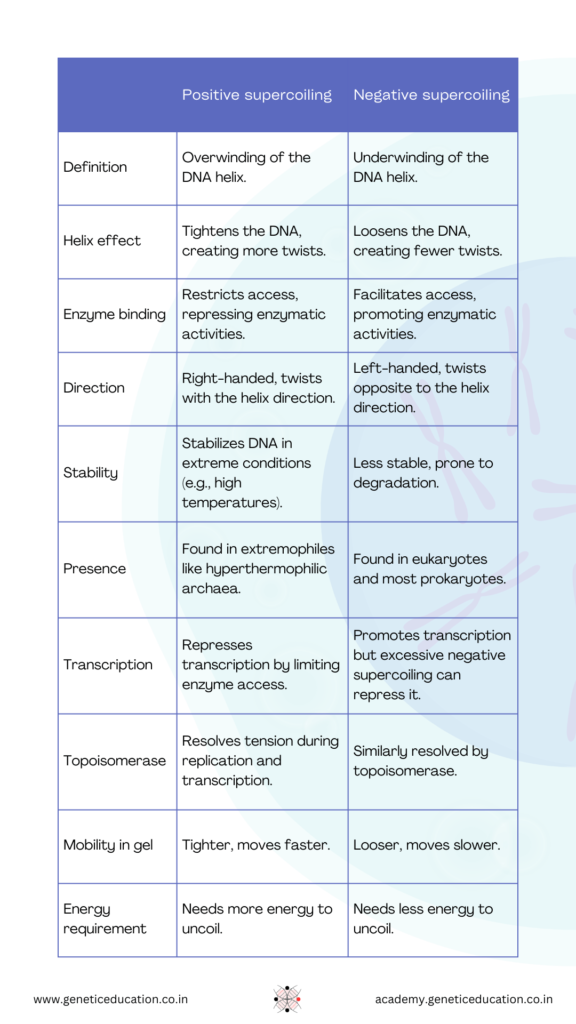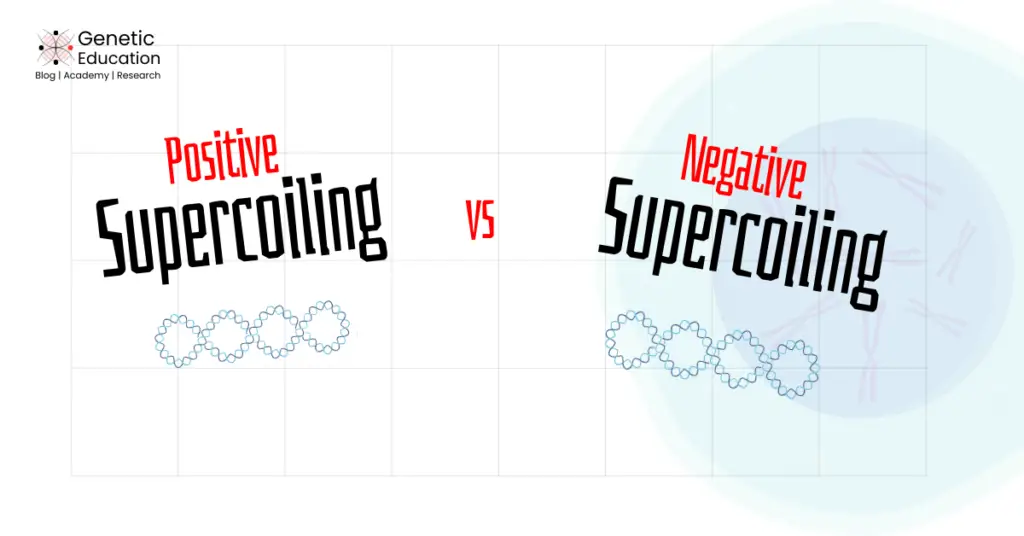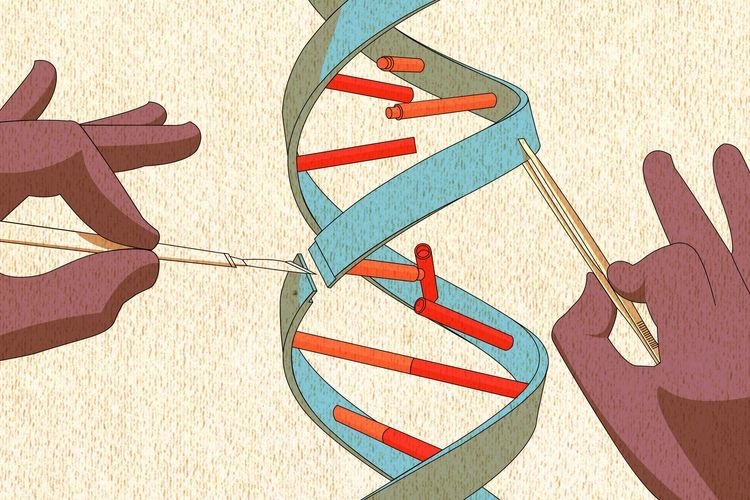“Supercoiling is a process that compresses the DNA and helps package it into a cell nucleus. Here is the complete comparison of positive vs. negative supercoiling of DNA.”
Despite having a well-organized double helix, DNA also twists, coils and folds to perform various biological activities. This process, in simple words, is known as supercoiling.
Supercoiling has 5 important functions for a cell— to fit inside the cell nucleus, provide stability to DNA, prevent unnecessary enzymatic reactions, regulate gene expression and form chromosomes.
Positive and negative supercoiling are two common supercoiling forms observed. In this article, I will explain the differences between positive and negative supercoiling.
Stay tuned.
Disclaimer: The content presented herein has been compiled from reputable, peer-reviewed sources and is presented in an easy to understand manner for better comprehension. A complete list of sources is provided after the article for reference.

Key Topics:
Positive vs Negative Supercoiling
Positive supercoiling occurs due to the overwinding of DNA double helix whereas negative supercoiling occurs due to the underwinding of DNA double helix (I know it can’t be understood, but wait, after this article, you will understand it!).
Thus, positive supercoiling creates more twists and tightens the DNA double helix. Conversely, negative supercoiling creates fewer twists and loosens the DNA double helix.
Consequently, the double helix tightening (positive supercoiling) disallows enzymes and proteins binding to DNA and disallows enzymatic activities. On the other hand, the double helix loosening gives excess to enzymes and protein and allows enzymatic activities.

Technically, the positive supercoiling is right-handed— the DNA strand twists in the same direction as the double helix. In contrast, the negative supercoiling is left-handed— the DNA strand twists in the opposite direction of the double helix.
As aforementioned, positive supercoiling tightens and disallows enzymes and thus provides stability to DNA at extreme conditions. For instance, at a higher temperature DNA remains stable. In contrast, negatively supercoiled DNA is less stable and prone to degradation.
Positive supercoiling maintains DNA integrity in extreme conditions and, henceforth, is present in organisms living in harsh conditions, such as hyperthermophilic archaea.
On the other hand, proteins and enzymes can easily excess negatively supercoiled DNA and allow replication and transcription. Therefore it is present in eukaryotes and most prokaryotes.
It is also important to note that more energy is needed to uncoil the positively supercoiled DNA in comparison to negatively supercoiled DNA.
So we can also say that positive supercoiling represses transcription while negative supercoiling promotes transcription by recruiting various enzymes. Noteworthy, the study also reveals that overaccumulation of even negative supercoiling will repress transcription as well.
It is also crucial to understand that at various stages of DNA metabolism, the DNA supercoiling state may also vary. For instance, during the replication and transcription, the polymerase-govern action generates positive supercoiling ahead and negative supercoiling behind the polymerase.
If we do an in-depth analysis of this scenario then these are the conclusions.
The newly synthesized strands during replication and promoter or upstream region during transcript are negatively supercoiled or in the relaxed state. While the contrary end or the direction of polymerase or enzyme action introduces positive supercoiling.
In addition, the tightly packed positively supercoiled DNA runs faster in the gel while the loosely packed negatively supercoiled DNA runs slower in the gel.
In eukaryotes and most of the prokaryotes, the positive supercoiling is a “kind of” temporary state and is created due to enzymatic activities. However, it can be simultaneously released by the topoisomerase activities.
Topoisomerase cuts the positively and negatively supercoiled DNA, releases the tension, and helps efficiently progress replication.
Summary:
| Positive supercoiling | Negative supercoiling | |
| Definition | Overwinding of the DNA helix. | Underwinding of the DNA helix. |
| Helix effect | Tightens the DNA, creating more twists. | Loosens the DNA, creating fewer twists. |
| Enzyme binding | Restricts access, repressing enzymatic activities. | Facilitates access, promoting enzymatic activities. |
| Direction | Right-handed, twists with the helix direction. | Left-handed, twists opposite to the helix direction. |
| Stability | Stabilizes DNA in extreme conditions (e.g., high temperatures). | Less stable, prone to degradation. |
| Presence | Found in extremophiles like hyperthermophilic archaea. | Found in eukaryotes and most prokaryotes. |
| Transcription | Represses transcription by limiting enzyme access. | Promotes transcription but excessive negative supercoiling can repress it. |
| Topoisomerase | Resolves tension during replication and transcription. | Similarly resolved by topoisomerase. |
| Mobility in gel | Tighter, and moves faster. | Looser, and moves slower. |
| Energy requirement | Needs more energy to uncoil. | Needs less energy to uncoil. |
Related article: What is DNA Packaging in Eukaryotes?
Wrapping up:
These are some of the common and technical differences between positive supercoiling and negative supercoiling.
Supercoiling is required for DNA to fit in the cell nucleus. Furthermore, it also regulates gene expression activities. I hope this article will help you learn about genetics. Do share it and subscribe to Genetic Education.
Resources:
Gilbert N, Allan J. Supercoiling in DNA and chromatin. Curr Opin Genet Dev. 2014 Apr;25(100):15-21. doi: 10.1016/j.gde.2013.10.013. Epub 2013 Dec 22. PMID: 24584092; PMCID: PMC4042020.


